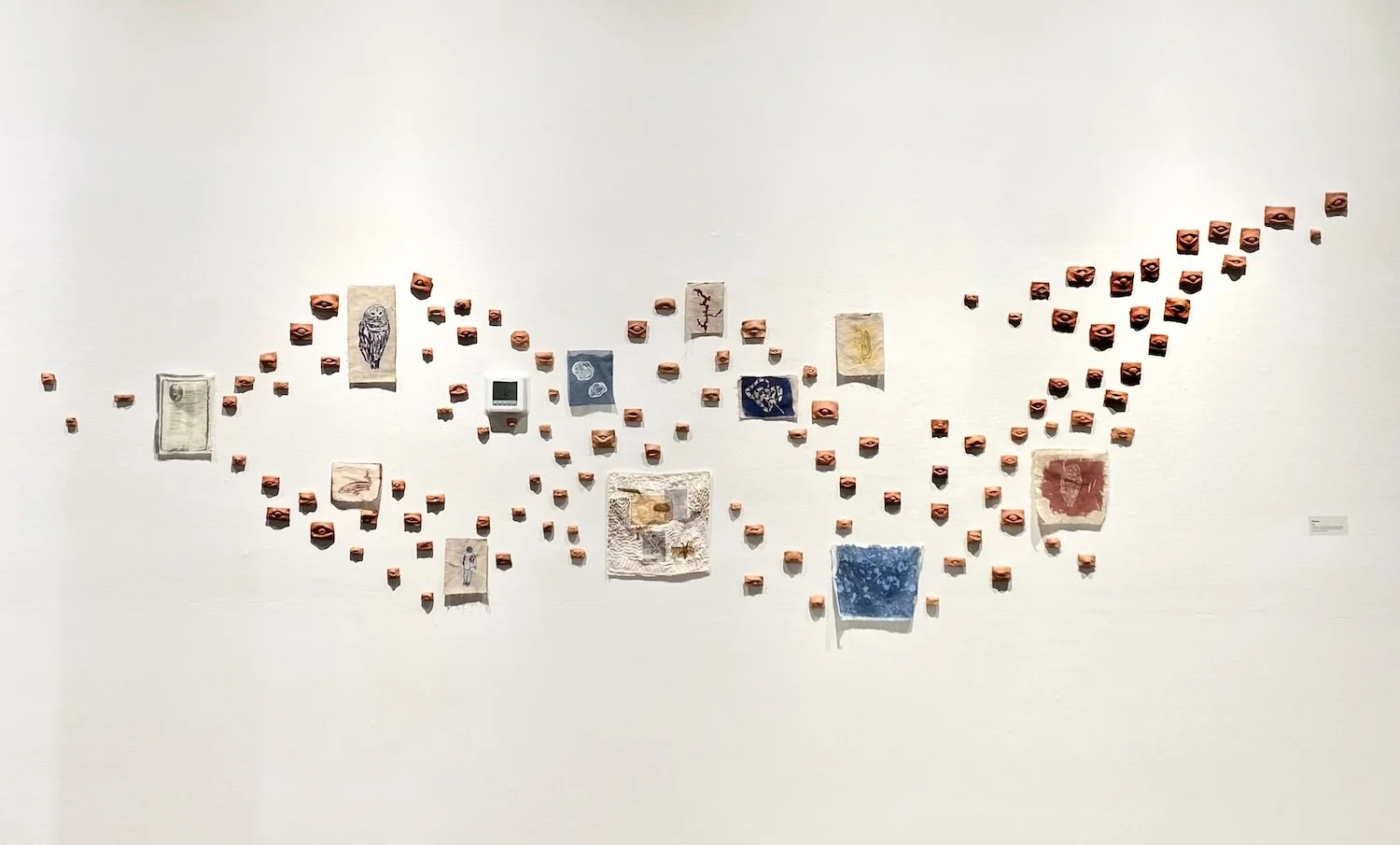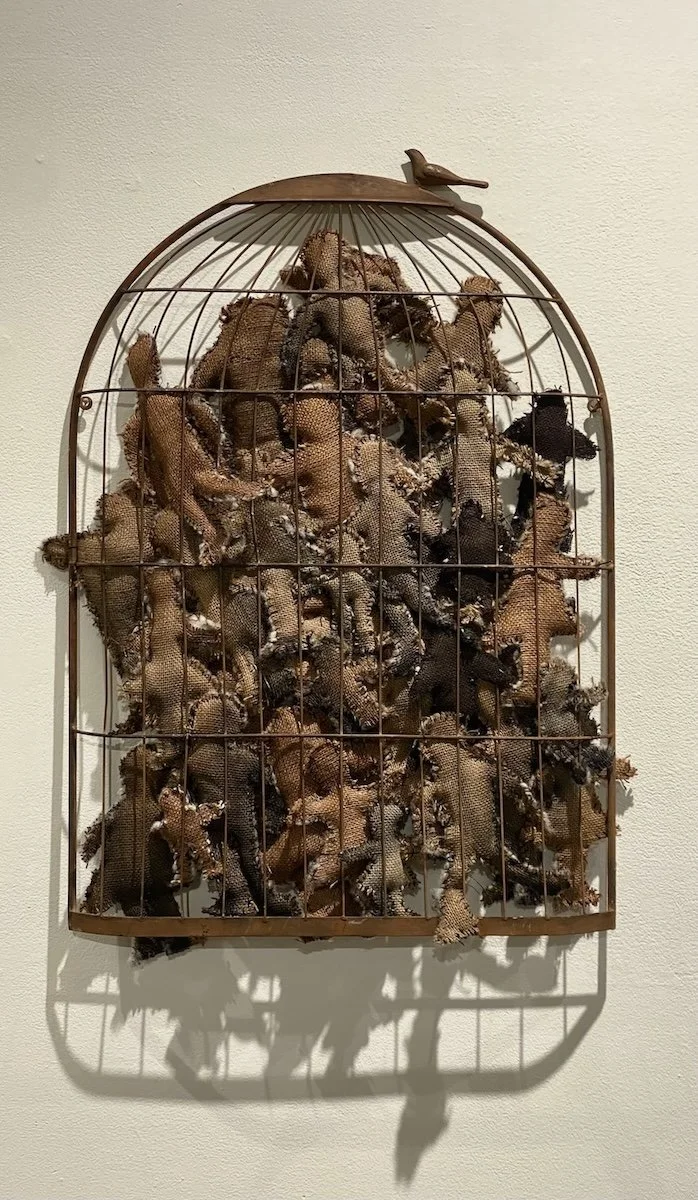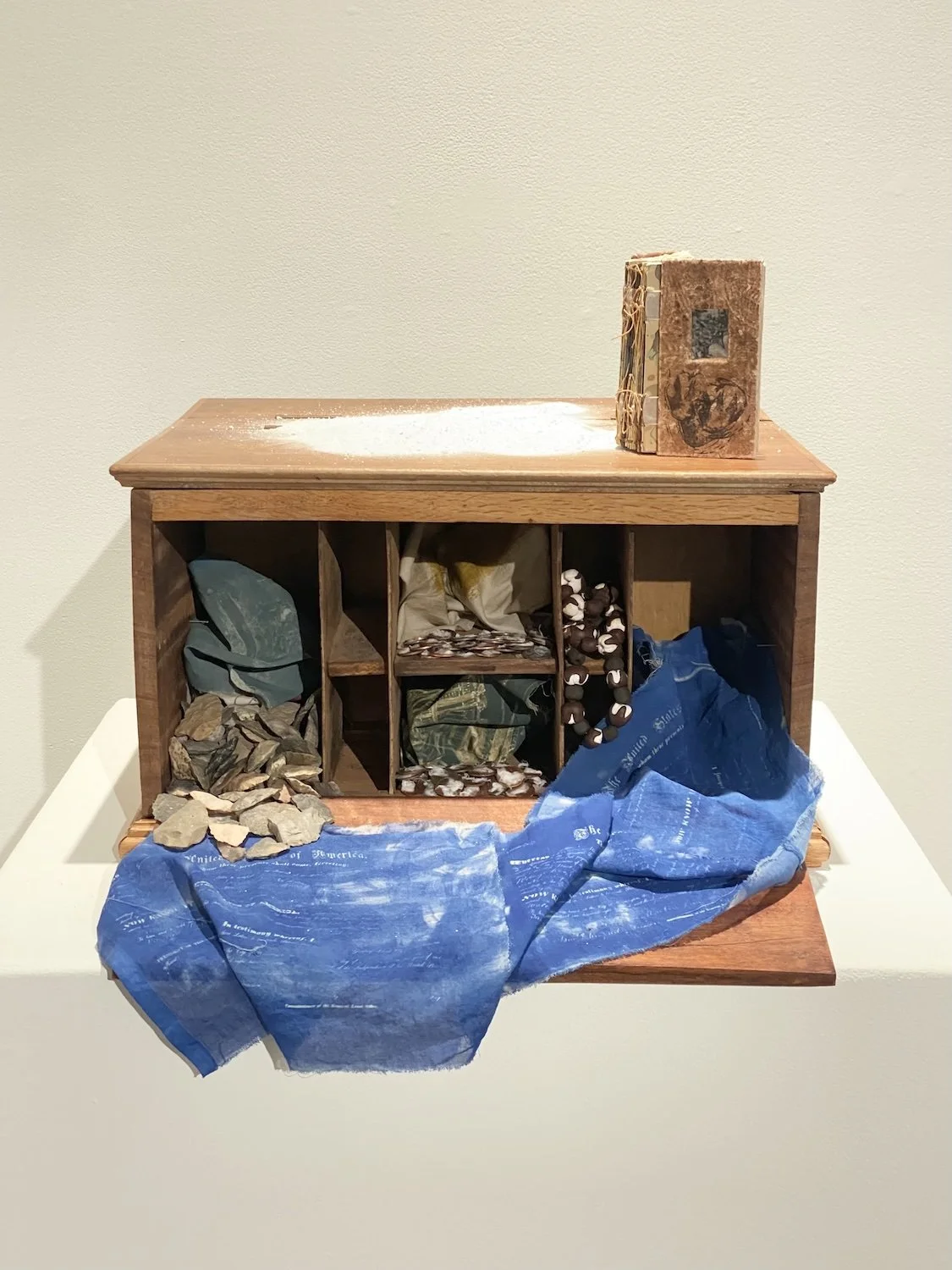Coosa Bend Work
Witness
The eyes refer to those enslaved on the Wallace plantation. Their names that we know are inscribed in gold on the back of eyes. Those lost to memory are represented by blank-backed eyes. They gaze toward the viewer, holding them accountable. The cloth images are of the animals and people associated with stories of the Wallace house and the Coosa River The embroidered handkerchief is based on a photo of the artist as a young girl at the Wallace house. The cloth image on the right is of a page of Kate Henderson Wallace’s scrapbook. She pasted ephemera over her fathers working journal, in this case a poem and photo of Robert E. Lee on top of a letter.
The eyes were made by the artist’s granddaughter, Caro Gottlieb. Terracotta, cotton, and solarfast, 2025.
Caged Bird
Caged Bird is composed of burlap figures, representing persons enslaved by the Wallaces. The title is taken from Maya Angelou’s book I Know Why the Caged Bird Sings.
Found metal object, burlap, cotton, 2020-2025
The Cotton Economy
This work frames the basis of the Wallace plantation cotton economy on what was once Muskogee land ,that was taken at the Battle of Horseshoe Bend and sold to settlers. They used this land for the monoculture farming of cotton. The artist’s book contains the known names of the people enslaved by the Wallaces and passages from James Mallory’s (Wallace kith) agricultural journal from 1843-1877 that was published as Fear God and Walk Humbly. It sits on marble dust, extracted and used for buildings.
Found table top desk, artist book, Gantt’s Quarry (Sylacauga) marble dust, pennies with cotton linter, polymer clay cyanotype images on organza, arrowheads from the private collection of the Galveston Museum of Art.


